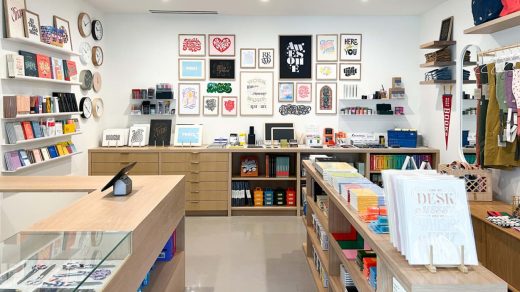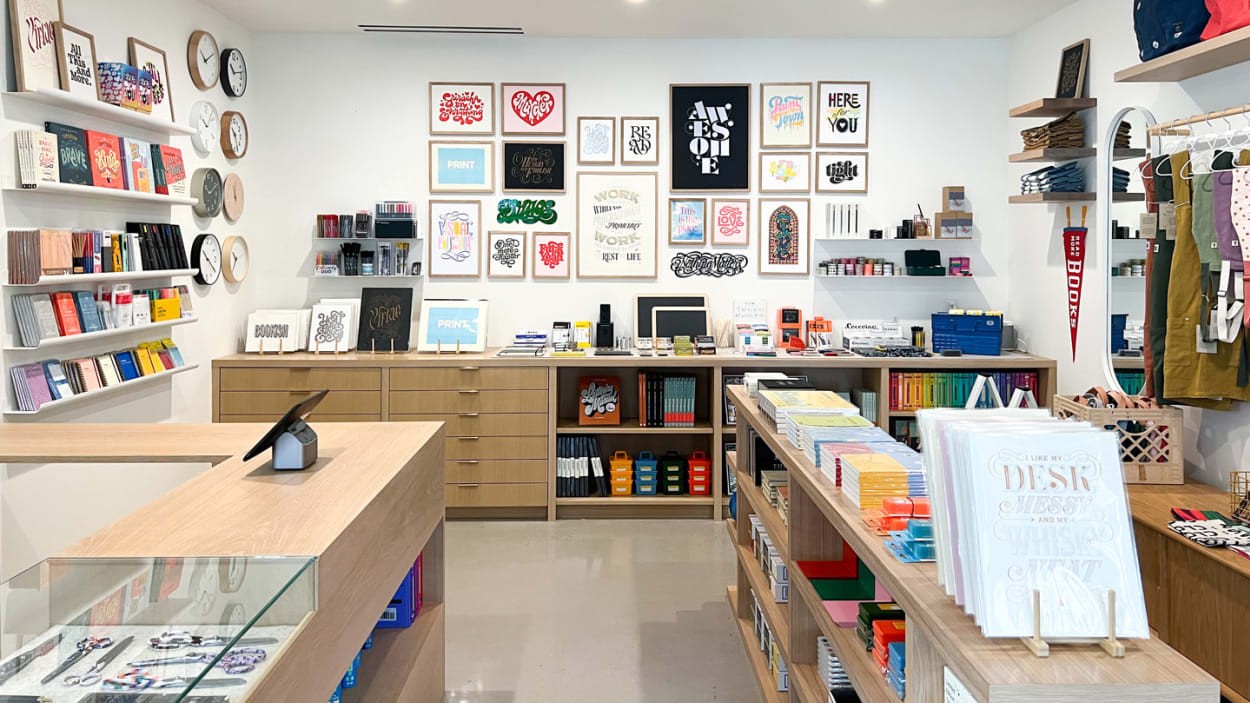How Jessica Hische built a dreamy retail destination for designers
From the elegant titles of Moonrise Kingdom to her warren of rabbit-populated picture books, Jessica Hische has long crafted richly lettered, designed, and illustrated worlds . . . and now you can actually step inside one.
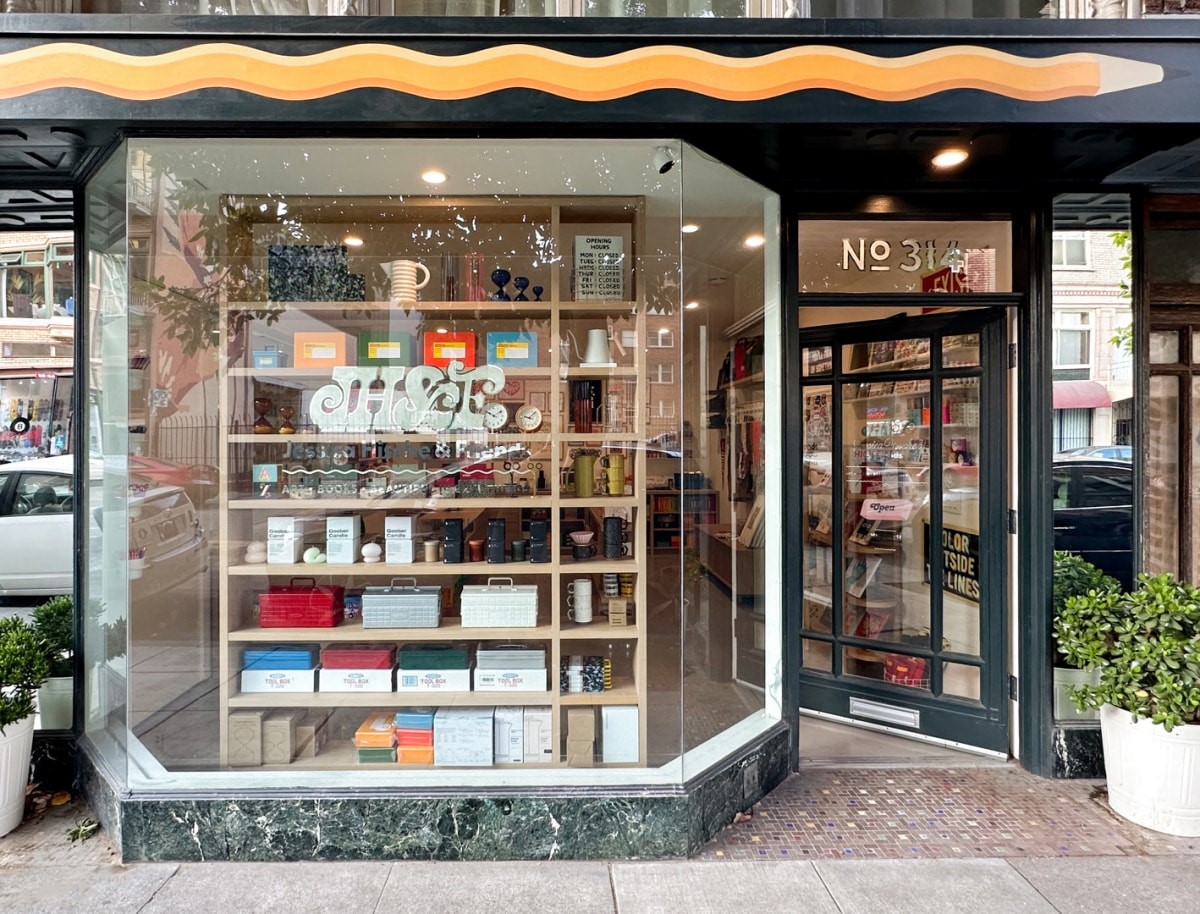
On September 23, Hische is opening an art, book and tools-of-the-design-trade store in Oakland, California. It’s something she says she has dreamed about doing for years, and after purchasing the roughly 1,500-square-foot building that would become her studio and workshop in 2018 and renovating it down to the studs, she emerged from the pandemic and began a vast work of art direction to realize her new shop.
The end result was shaped by her visits to various others around the world. “Whenever I go to a new city, I treat boutiques like my gallery visits,” she says. “A lot of people go immediately to the museum, but I end up going to small boutiques that feature a lot of local artists and makers and stuff like that. It gives me a more immediate contemporary connection to a place.”
In the store, you’ll be able to snag exclusive Hische prints, signed books, and experimental offerings like jewelry—Hische is viewing the shop a bit like a test kitchen for pieces she might want to produce in larger runs in the future—but the offerings go beyond her own creations. Hence the name: Jessica Hische & Friends.
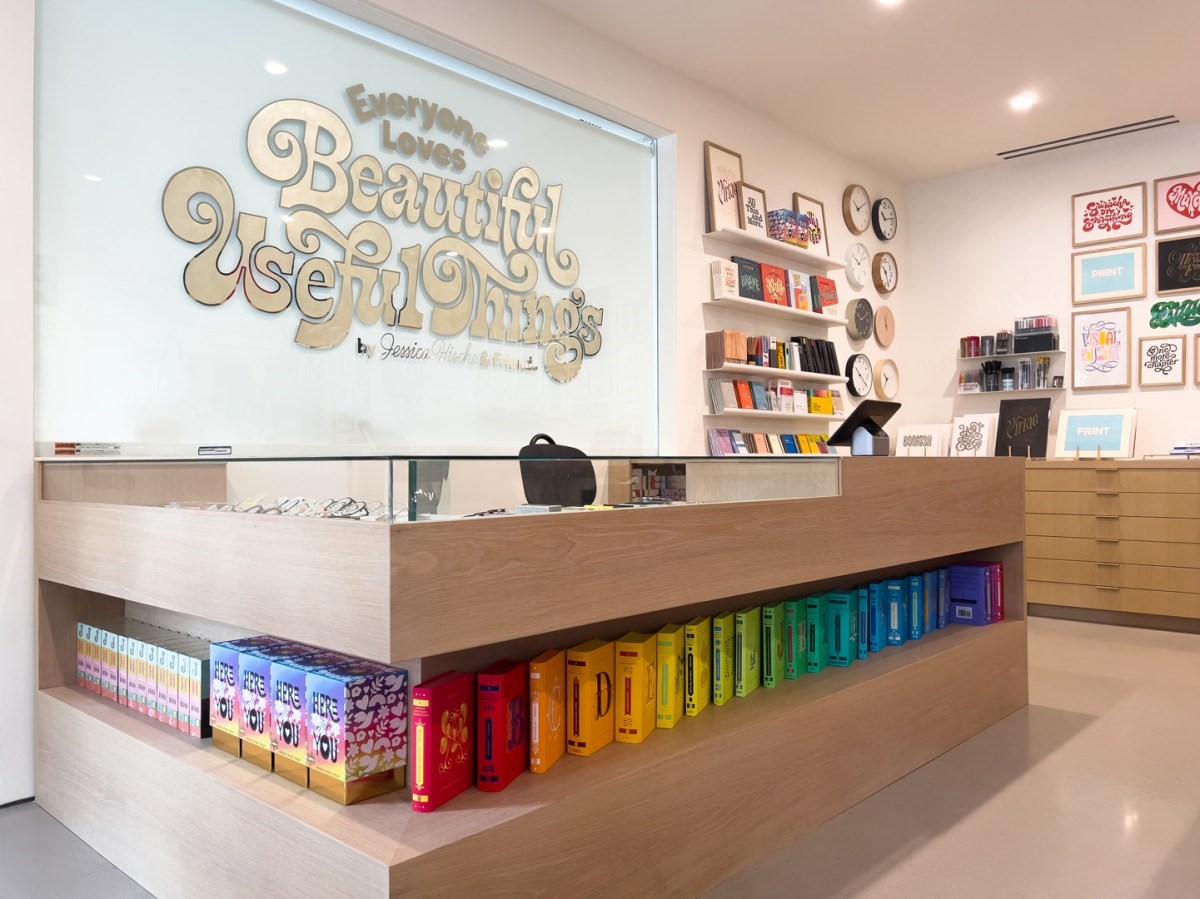
In the boutique, located at 314 15th Street in Oakland, visitors will find work by a medley of artists, studios, and companies, so long as their offerings adhere to the shop’s mission statement: “beautiful, useful things.” Rather than a home decor hub, Hische thinks of JH&F as a studio decor and supply shop.
“Everything that’s there is something that would make your space that you create in better—whether it’s things that actually decorate the space or something that assists you in creating,” she says.
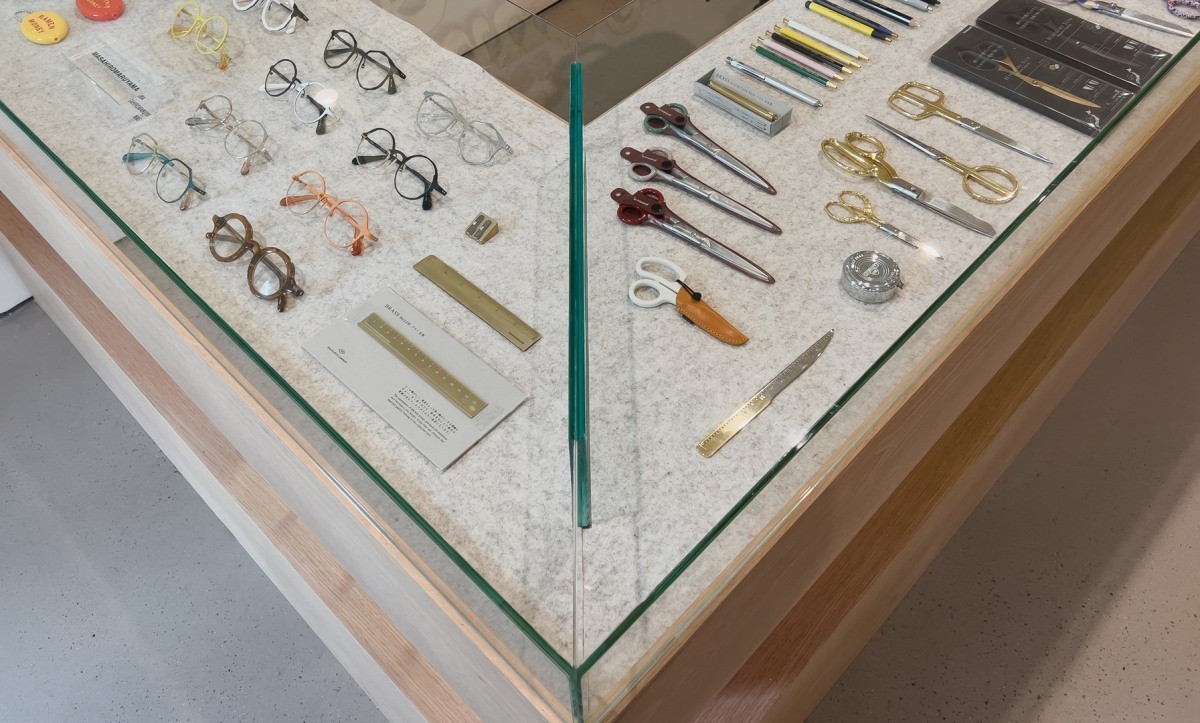
So far, those beautiful, useful things include objects like Kita-Boshi pencils, Rollbahn notebooks, Nakabayashi stationery, Ellepi and Zenith staplers, Studio Carta scissors, Lemnos clocks, Lois Origami coffee filters, Young Jerks hats, Hedley & Bennett aprons, and myriad objects in between, from jewelry to pins and patches.
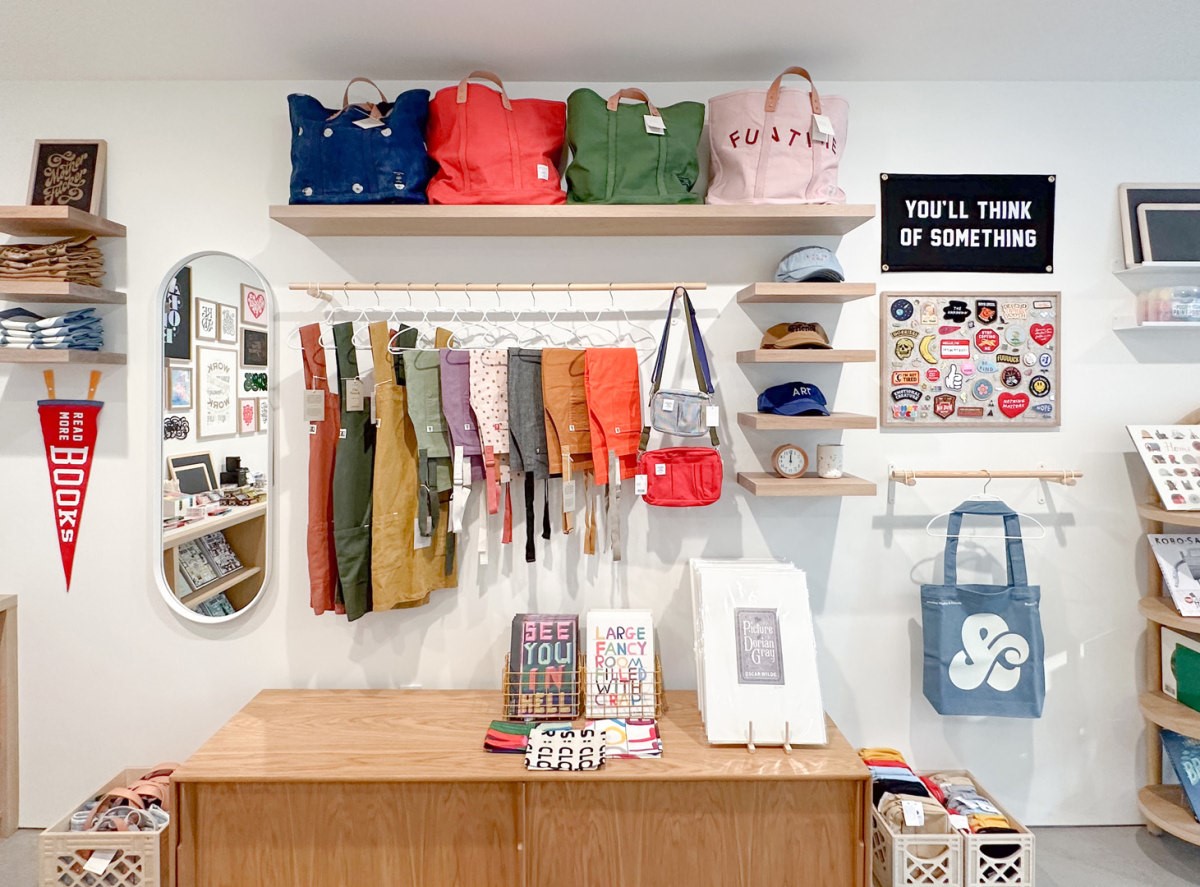
Beyond curating the products, Hische curated the design journey of the space itself. She looked to the elements that keep people comfortably browsing in boutiques—such as having enough merchandise on the floor so that you can hold the objects in your hands without having to constantly ask the person behind the counter about different products (but not so many products that the customer gets overwhelmed). Making sure the goods are accompanied by clear prices. Basically, allowing people to feel autonomous and not dependent on interacting with the shopkeeper—which is why the point-of-sale desk at Jessica Hische & Friends is not on top of the entrance, where one finds themselves face-to-face with the proprietor and, in a perpetually awkward scenario we’ve all experienced, pretending to browse for five minutes before fleeing.
Hische also believes that Instagram has trained people to seek out vignettes—and thus the best stores allow customers to feel they are experiencing curated scenes. “It’s almost like more of a gallery experience that way,” she says. “Because if you’re in a gallery or in a museum, there are these times when you’re meant to pause and take in a specific view.”
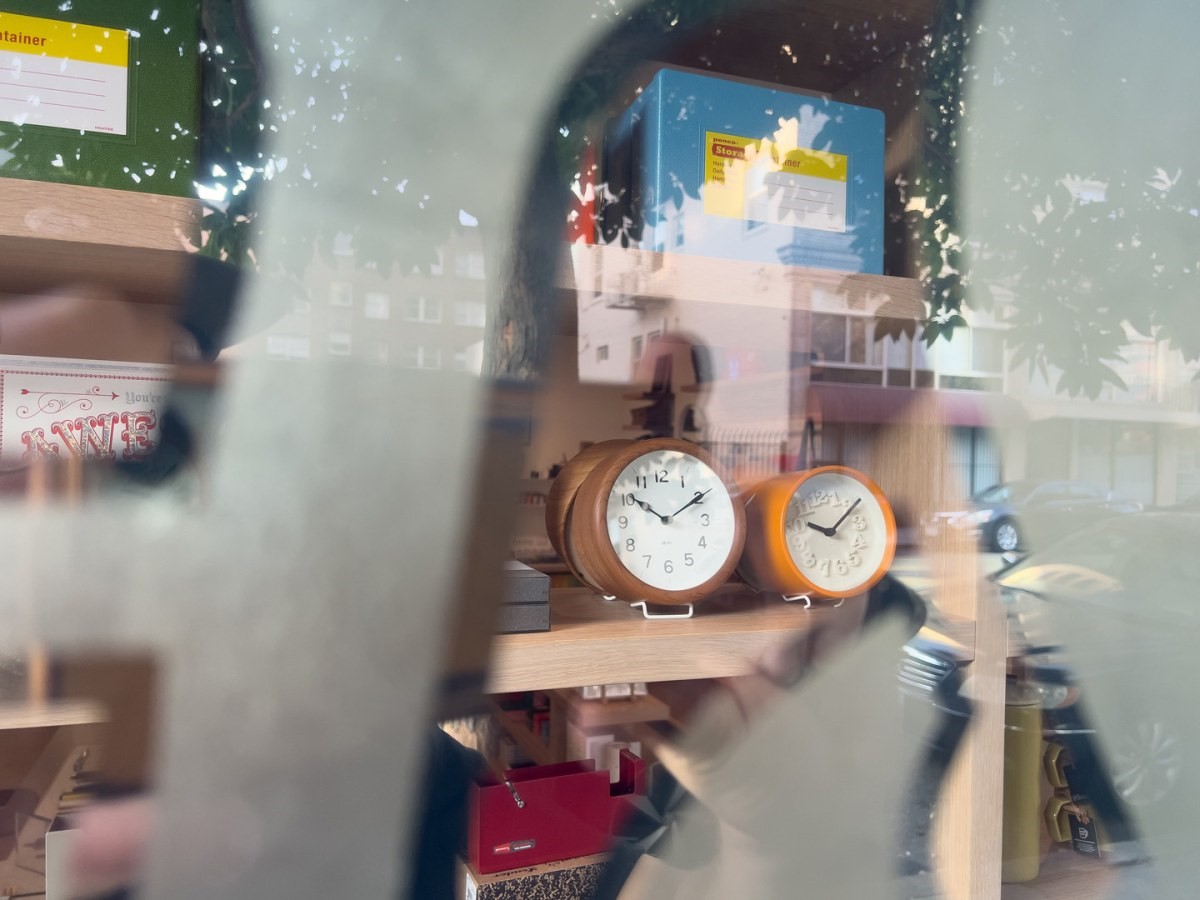
Perhaps one such scene at Jessica Hische & Friends: the custom-made bookcase designed to look like a sheet of composition notebook paper. True to the store’s offerings, it’s a practical tool—and one that harkens back to handcraft, which remains at the heart of the store. Case in point: the window behind the point of sale desk that declares in white gold leaf, “Everyone loves beautiful, useful things,” and offers a direct view to Hische’s own tinkering space. She hopes to host activations where people can come and pull their own pre-set print from the press back there.
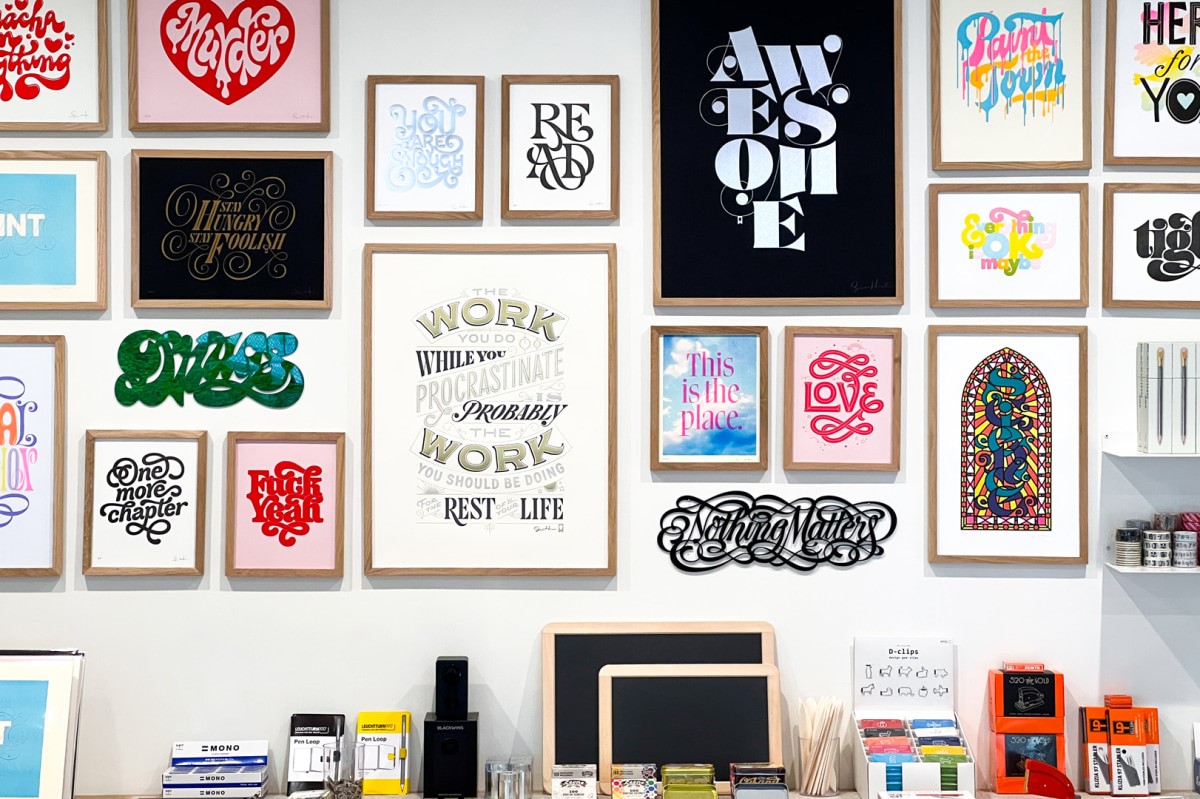
“One of the things that I think makes people connect with my work is actually understanding how much a part of it that I am—that I do much of the production myself, and that I include people in the process,” she says. “That big picture window between the spaces is meant to [convey the connection that] ‘here’s where it gets made—and here’s where you’re buying it.’”
In the future, she plans to roll out more objects like stationery, ornaments, and greeting cards. Because ultimately, the store is one giant love letter to the analogue at large.
(14)

